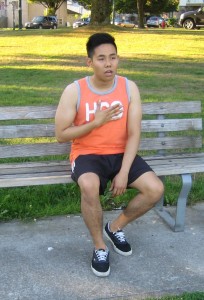For people who work in healthcare, Advanced Life Support training is a must. Basic Life Support is usually enough for the general public and for health care workers, but if you are a professional, like a nurse, you will most likely need ALS training. Advanced Life Support is offered in two programs, one for adult management and the other for pediatric management. The former is called Advanced Cardiac Life Support (ACLS) while the latter is called Pediatric Advanced Life Support (PALS).
Cardiac arrest and congenital heart disease

Cardiac arrest – a state when the heart stops beating – can occur because of different factors. The most common cause is a pre-existing cardiac disease, usually lifestyle related. Complications of an unhealthy lifestyle like hypertension and hypercholesterolemia are the result of a diet that is high in fat, sodium, and bad cholesterol. However, there are occasions when cardiac disease is caused by a congenital condition – or a heart problem that a person has had since birth.
Congenital Heart Disease (CHD) statistics
CHDs are the most common congenital conditions in the US; amounting to 40,000 births each year. The most common kind of CHD is a ventricular septal defect (VSD), wherein the wall that divides the two ventricles is malformed or has a hole. In a study in 2002, it was estimated that over 650,000 to 1 million Americans were living with CHD, 80,000 of them being severe cases. With these defects, the heart doesn’t function normally. It can beat too fast, too slow, or irregularly. With enough stress on the heart, it can stop functioning completely- leading to arrest.
Managing with CPR

There are three basic skills involved in CPR: compression, ventilation, and defibrillation. Compression manually pumps the heart; ventilation oxygenates the blood (through mouth-to-mouth resuscitation or with a bag valve masks); defibrillation returns the heart to its normal rhythm. Contrary to what you see in movies, defibrillation cannot be done when the victim is experiencing a flatline.
- Chest compressions should be 2 inches deep for adult victims, allowing for the chest to completely recoil before the next compression is given.
- Before giving ventilations, the mouth is opened by thrusting the jaw down and tilting the head back. Before you give the next breath, watch to see if the chest is rising and falling according to each one you give.
- Defibrillation sends electricity to the heart from an automated external defibrillator (AED). The AED sends electricity through pads placed on the chest, to the heart.
ACLS training
Our Advanced Cardiac Life Support program is 16 hours long. It takes two days to complete and has an accompanying re-certification class. The re-certification class is either 6 hours and 20 minutes or 8 hours and 20 minutes. The two hours account for optional stations that the student can choose not to take.
